Into the Darkness:
An Uncensored Report from
Inside the Third Reich at War
by Lothrop Stoddard
Chapter 12: Hitler Youth
During the autumn and winter months spent in Berlin I would occasionally see groups of boys on the streets clad in simple blue uniforms. Once or twice they had their arms filled with old newspapers a patriotic chore to which they had been assigned. More often I would see them helping extract contributions for the WinterHelp, a charity collection scheme that I will later describe.
Those are perhaps the only glimpses the casual foreign visitor gets of the extraordinary system whereby National Socialism is molding the rising generation according to its imperious will. Like many other things in the Third Reich, what you see on the surface is only a small part of what lies behind. Outwardly, Nazi Germany even in wartime does not look startlingly different from the Germany of former days. The same ordered neatness and cleanliness prevail, and you may live there a long time without having a single dramatic incident occur before your eyes. All this is apt to fool you, until you dig below that impeccable surface. Then you begin to learn and to understand the radical transformation of life and thought that is taking place.
These blueclad boys, between 10 and 14 years old, represent the first link in a chain of evolution which begins with the unformed child and ends with the uniformed man, indelibly stamped with the Nazi brand.
[Image] Members of the Hitler Youth (Hitler Jugend) in 1933.
Their official title is Jungvolk best translated as Hitler Youngsters. Like everything else in the Third Reich, they are organized from basic groups of ten right up to National Headquarters. However, their duties and training are elementary, as befits their tender years. The system does not get into full swing until these boys enter the Hitler Youth, where they remain until their nineteenth year. Thence they go into the National Labor Service, which we have already described. After that comes military service, which lasts at least two years more. Such is the arduous apprenticeship which the male German must undergo.
The German girl passes through a formative period similar in character and of about the same length. From 10 to 14 she is a Young Maiden; after that she is a Hitler Maid until she is 21. During the latter years of her Maidhood she is apt to be enrolled in the young women’s branch of the Labor Service, but of course she has no military service to undergo.
The combined male and female membership of the Hitler Youth in all its stages aggregates a total of well over 7,000,000, highly organized in every respect. That, I imagine, is the largest single youth organization in the world.
[Image] German poster for the Bund Deutscher Mädel. (The League of German Girls or League of German Maidens, was the girl’s wing of the overall Nazi party youth movement, the Hitler Youth. It was the only female youth organization in Nazi Germany. Initially the League consisted of two sections: the Jungmädel, for girls ages 10 to 14, and the League proper for girls ages 14 to 18.)
Adolf Hitler always stressed the necessity for any proselyting movement to gain and retain a firm hold on the rising generation. At the very start of his movement he organized a small youth group, though this was shattered like every other phase of his first effort after the disastrous BeerHall Putsch of 1923. However, with the refounding of the Party two years later, a youth section was promptly started and made rapid headway under a series of able leaders, of whom Baidur von Schirach is the most famous. Before an interview could be arranged for me, the leader of the Hitler Youth had made his dramatic gesture of volunteering for army service and promptly departed for the Western Front.
[Image] Baldur Benedikt von Schirach at a Nuremburg rally with the Hitler Youth.
To gain youth’s allegiance, the Nazi regime has evolved a system which enlists the interest and loyalty of the rising generation. Its core is the local Home a. well appointed boys’ clubhouse where the youngster meets his fellows in an atmosphere of comradeship supervised by carefully chosen leaders. Every Wednesday, the boys and girls gather in their respective Homes for their regular HomeEvening. The leader conducts the meeting according to a program prepared in advance at National Headquarters. Throughout Germany, the same songs are sung and the same subjects discussed. Then the radio is switched on, and all listen to a program entitled “Young Germany’s Hour,” which begins at 8.15 P.M. and is broadcast by all stations. On some other week day evening the youngsters gather a second time for a program devoted to games and sports. It is interesting to note that there is no military drill or use of arms in these physical exercises. Unlike the Balilla and Sons of the Wolf, the corresponding youth units of Fascist Italy, there are no miniature rifles or other warlike paraphernalia. The Nazis believe that imposing military training at this early age would be a psychological mistake.
To develop loyalty and maintain interest in their organization, a whole round of activities and special events has been devised. On New Year’s Day the Supreme Youth Leader makes an address to all his followers over the radio. In late January Young Germany honors the memory of its symbolic martyr, a fifteenyearold Hitler Youth named Herbert Norkus, murdered by Communists during the years of strife before the Nazis came to power.
[Image] Herbert Norkus [1]
From February to April a series of competitions takes place to determine who among them possess those qualities of leadership which qualify them to be appointed to minor offices in the organization. The Fuehrer’s birthday, April 20th, is a great celebration, on which Hitler Youngsters who have attained their fourteenth year pass into the ranks of Hitler Youth. On May 1st, winners of special competitions throughout Germany are received by the Fuehrer himself. From June to August millions of Hitler boys and girls go vacationing in their Youth Camps or on hiking tours, and nationwide sport competitions take place. The highlight of this period is the annual Party Day at Nuremberg, when chosen detachments of Hitler Youth of both sexes travel thither from the remotest parts of the Reich to parade proudly before the Fuehrer and receive the applause of assembled Nazidom. This is also the day when those youths who have completed their eighteenth year formally graduate into the adult ranks of the Party. The autumn months are enlivened by various activities, especially participation in the Winter Help charity drives. It is easy to see how this continuous round of stimulating, pleasurable activities tends to center interest and loyalty around the organizational Home and all that it signifies.
[Image] Hitler Youth members
How has all this modified the individual boy’s and girl’s relations to those other aspects of life family, church, and school? Complex adjustments are inevitable, for we must remember that, however pleasurable they may be, Hitler Youth activities are duties which must be complied with and with which no one may interfere. In the first years of the Nazi regime I am told that this sudden shift of youthful loyalties provoked frequent domestic conflicts and caused many personal tragedies. Great numbers of nonNazi parents were recalcitrant at seeing their children placed in an atmosphere which sapped their authority and tended to make boys and girls flout the teachings of their elders. The traditional German family is patriarchal, and many fathers objected to the claims of the Youth Home on personal grounds even when they had no strong objections to the Nazi regime as such. In many cases, this conflict of loyalties went so far that boys and girls denounced their own parents to the authorities for what the children had been taught to consider unpatriotic speech or conduct.
[Image] The League of German Maidens. Bund Deutscher Madel or BDM was the girls’s wing of the Nazi Party youth movement.
Today, I understand that such extreme conflicts are rare. The Nazi regime broke parental resistance as systematically as it did opposition of every kind; so the most rebellious fathers and mothers have been weeded out by concentration camps or lesser penalties. The average parent now accepts the situation as inevitable, even if he or she does not at heart wholly approve. Indeed, I was told by foreign observers that a large proportion of German parents, including of course all Party members, now assent willingly to an institution which teaches their children good personal habits, promotes their health, and brightens their young lives in many ways.
[Image] Adolf Hitler salutes his Hitler Youth. Senior Nazis wanted the movement to forge close ties with the Boy Scouts [2]
Far more serious has been the conflict with the churches. Both the Protestant and Roman Catholic confessions possessed strong youth organizations. The Nazi Government, in accordance with its policy of all round coordination, insisted that these confessional groups be merged in the Hitler Youth. This raised a storm of protest from pious church folk, who deemed the Youth Homes, with their absence of denominational teaching, little short of godless, while priests and pastors encouraged and backed the protests of their parishioners. Here, again, very many distressing incidents took place. Protestant opposition has apparently lessened with the years, though a recalcitrant minority still exists. The Roman Church, however, has maintained its traditional objection to membership of its young people in non Catholic organizations. This is one of the main reasons for the deep going conflict between the Roman Church and the Nazi State which has existed from the start and which is by no means settled.
The uncompromising Nazi attitude is set forth in the following official statement:
“The socialist conception of the Third Reich demands of each individual the unconditional subordination of his individual being to the socialist expression of his people. This socialist existence has one form of expression as far as the youth of Germany is concerned: namely, the Hitler Youth. Every youth association outside the Hitler Youth transgresses against the spirit of the community which is the spirit of the State.”
That policy has been carried out by a combination of legal action and official pressure which most Roman Catholic parents have been unable to resist. The result has been the liquidation not only of the Catholic youth organizations but of most of the parochial schools as well. But I was told that a vast deal of suppressed heart burning persists.
The Nazification of the public schools presented no such difficulties because they formed part of the State itself. The Nazis have made few formal changes in the educational system they inherited from the previous regime, but its spirit and emphasis have been profoundly altered.
Bernhard Rust, Reich Minister of Education, thus characterizes the former system:
“Although the intellectual capacities of young persons had been excellently trained and although they were thoroughly qualified for their vocations in afterlife, the importance of knowledge for knowledge’s sake had been over estimated, whilst physical education and the training of the will had been neglected…. Furthermore, excessive importance had been attached to the individual as such. It was almost forgotten that each individual is at the same time a member of a racial community, and that it is only in that capacity that he can perfect his powers to their fullest extent, while it is his duty to work for the community good.”
Dr. Rust then continues his argument for the Nazi idea of education by asserting:
“All forms of instruction have one aim the shaping of the National Socialist human. But each form has its special tasks. The school is, in the main, determined by the fact that it educates by means of lessons…. In the past there has been a tendency towards cramming into pupils’ heads every new addition to learning, but restrictions are now imposed upon that tendency. It is not necessary to teach everything that is interesting or otherwise worth knowing.”
Dr. Rust’s somewhat restrictive view of formal education is in exact accordance with Adolf Hitler’s dictum, when he wrote in Mein Kampf that one should;
“not cumber the brain with a lot of useless knowledge, ninety five per cent of which it has no use for and hence proceeds to jettison.”
[Image] Dr. Bernhard Rust (30 September 1883 in Hanover – 8 May 1945) was Minister of Science, Education and National Culture (Reichserziehungsminister) in NS Germany. . During World War I he reached the rank of lieutenant and was awarded the Iron Cross for bravery.
In the same volume, Hitler also proposed “to cut down instruction so that it deals solely with essentials.” Among those essentials, the Third Reich emphasizes Nazi ideas and bodily development through sport. We have already seen several ways in which these aims are furthered, but even in the restricted sphere of the school they occupy a prominent part in the curriculum. The amount of time there devoted to the acquirement of what we may call book learning is relatively less than that of former days.
Emphasis on bodily development has undoubtedly produced some good results. No foreign visitor to the Third Reich can fail to note the high average level of health and strength in the rising generation. At the same time, some foreign investigators have criticized the new system as being out of balance.
One of the most interesting of these criticisms is contained in the report of a British educational mission which visited Germany in 1937. Its report raises the query whether athleticism is not being fostered at the expense of mental development. Noting signs of nervous strain among German school children and members of the Hitler Youth, taught to regard the body as a machine which must be kept at the highest pitch of efficiency whilst the mind must at the same time be attuned to maximum receptivity to Nazi ideas, these British educators were led to wonder whether the ultimate outcome might not be “Mens insana in corpore sano!” This joint emphasis upon athletics and Nazi ideology reaches its height in certain special institutions which the Third Reich has added to the regular educational system. These are the Adolf Hitler Schools and the National Socialist Order Castles.
The Hitler Schools are designed to train what Nazis term “a new aristocracy” from whose ranks shall be drawn the future leaders of the Third Reich. In their choosing, the wealth or social position of parents is supposed to play no part. The candidates are selected from twelve year old boys, physically perfect and of sound Germanic stock, who have shown special aptitude in school and in the Hitler Youth. It goes without saying that the one indispensable aptitude is a record of unflagging zeal for Nazi ideas.
Those selected youngsters are a favored group. According to the plan, they are to pass six years in fine educational institutions where they receive every advantage, entirely at Government expense. Thereafter they are scheduled to pass into the regular Labor Service and do their military duty. After those tasks come three years of civilian life, earning their living or starting a profession in the ordinary way.
Then, at the age of twenty five, they are to reassemble. By a second process of selection, the most eligible thousand (from the Party viewpoint) are picked for the Nazi Order of Knighthood the postgraduate School of Leadership. In stately castles reminiscent of the medieval fortresses of the Teutonic Knights, they will pass four years of intensive training, wherein physical and ideological attainments are brought to the highest pitch of perfection. This elite thousand will then graduate, to take up their lifework of guiding and governing the Third Reich.
The reader will note that I have spoken of this grandiose conception in the future tense. That is because it was started only two years before the war, which has at least temporarily shelved the daring experiment. As far as I could learn, the Hitler Schools are closed. I visited one in Northern Oldenburg. It was architecturally impressive but it was occupied by soldiers. The castles are likewise empty, the knights having all gone into military service.
Like about everything else in the Third Reich, its youth system is dependent upon the outcome of the life and death struggle wherein it is engaged.
———————————-
Footnotes:
[1] On 24 January 1932, 15-year-old Herbert Norkus and other Hitler Youth members were distributing leaflets advertising an upcoming Nazi rally. The group was confronted by Communists. Norkus fought them off and ran to a nearby house for help. A man answered and slammed the door in his face, presumably because he saw the other boys. Norkus was then stabbed six times by the pursuing Communists. He banged on another door, which was answered by a woman who tried to get him to a hospital. However, he died on arrival.
Writer Karl Aloys Schenzinger made Norkus into a role model for the Hitler Youth in a popular Nazi novel, Der Hitlerjunge Quex (1932). In 1933, it was made into a film directed by Hans Steinhoff, with Heinrich George in a leading role as the boy’s father. The novel was required reading for all members of the Hitler Youth.
A German Navy school ship called the Herbert Norkus was named in his honor, but it was never completed because of the war. Many schools, streets and squares were also named after him during the Nazi period.
MARCH 09, 2010
THE founder of the Boy Scouts founder held friendly talks with senior Nazis about forming closer ties with the Hitler Youth and was even invited to meet Adolf Hitler, newly released security files show.
Lord Baden-Powell, who started the Scouts in 1907, held talks with German ambassador Joachim von Ribbentrop and Hitler Youth chief of staff Hartmann Lauterbacher on November 19, 1937.
Lauterbacher, then 28, was in Britain to foster closer relations with the Boy Scout movement and Ribbentrop invited Baden-Powell to tea with the Hitler Youth leader, declassified MI5 Security Service files revealed.
A letter from Lord Baden-Powell to Ribbentrop the day after the meeting showed how he felt about the talks.
“I am grateful for the kind conversation you accorded me which opened my eyes to the feeling of your country towards Britain, which I may say reciprocates exactly the feeling which I have for Germany,” Lord Baden-Powell wrote.
“I sincerely hope that we shall be able, in the near future, to give expression to it through the youth on both sides, and I will at once consult my headquarters officers and see what suggestions they can put forward.”
In a report on the meeting, Baden-Powell described Ribbentrop as “earnest” and “charming”.
He wrote:
“I had a long talk with the ambassador, who was very insistent that the true peace between the two nations will depend on the youth being brought up on friendly terms together in forgetfulness of past differences.”
“He sees in the Scout movement a very powerful agency for helping to bring this about if we can get into closer touch with the Jugend (Youth) movement in Germany.”
“To help this he suggested that if possible we should send one or two men to meet their leaders in Germany and talk matters over and, especially, he would like me to go and see Hitler after I am back from Africa.”
He went on:
“I told him that I was fully in favour of anything that would bring about a better understanding between our nations, and hoped to have further talks with him when I return from Africa.”
———————————-
Chapter 1: The Shadow
Chapter 2: Berlin Blackout
Chapter 3: Getting on with the Job
Chapter 4: Junketing Through Germany
Chapter 5: This Detested War
Chapter 6: Vienna and Bratislava
Chapter 7: Iron Rations
Chapter 8: A Berlin Lady Goes to Market
Chapter 9: The Battle of the Land
Chapter 10: The Labor Front
Chapter 11: The Army of the Spade
Chapter 12: Hitler Youth
Chapter 13: Women of the Third Reich
Chapter 14: Behind the WinterHelp
Chapter 15: Socialized Health
Chapter 16: In a Eugenics Court
Chapter 17: I See Hitler
Chapter 18: MidWinter Berlin
Chapter 19: Berlin to Budapest
Chapter 20: The Party
Chapter 21: The Totalitarian State
Chapter 22: Closed Doors
Chapter 23: Out of the Shadow
———————————-
PDF of this post (click to download or view): Into the Darkness – Chap 12 – Ver 2
Version History
Version 7: May 11, 2022 – Re-uploaded images and PDF. Improved formatting.
Version 6: Jun 17, 2015. Formatting changes.
Version 5: Nov 28, 2014. Added PDF file (Ver 2) of this post.
Version 4: Nov 27, 2014 – Added updated PDF of post.
Version 3: Jun 21, 2014. Added PDF file of this chapter for download. Added images to text.
Version 2: Wed, Feb 5, 2014. Added Chapter links.
Version 1: Published Jan 22 2014 – Text added.


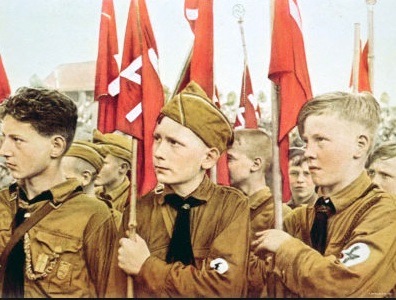
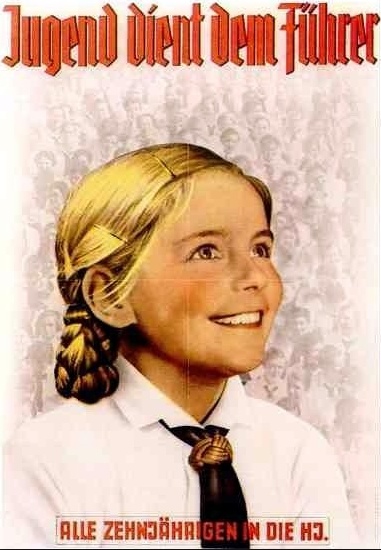
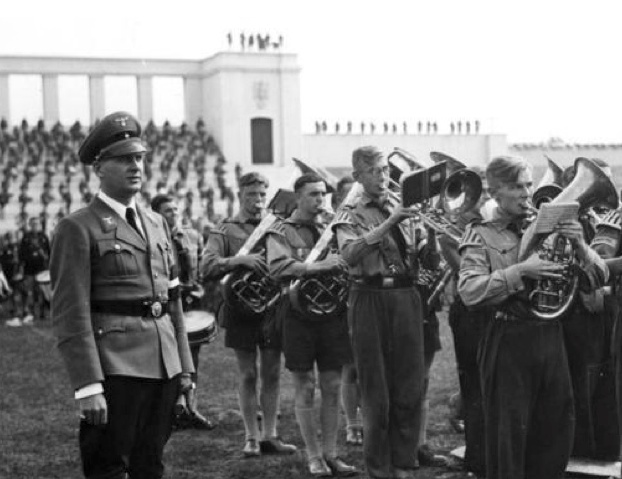

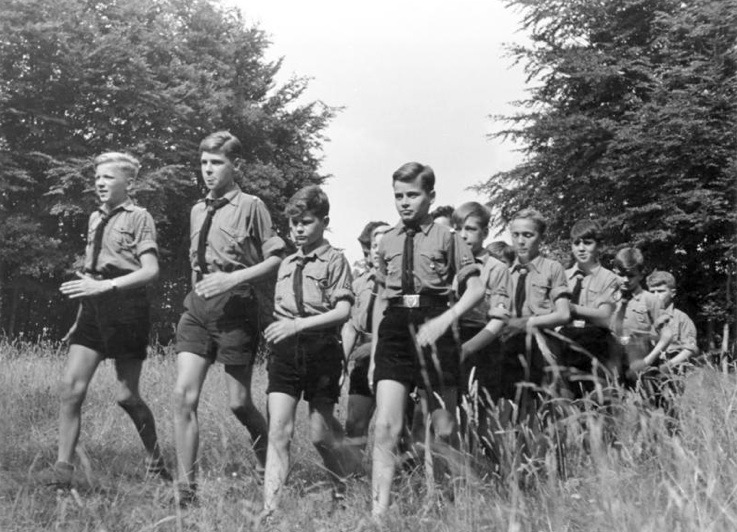

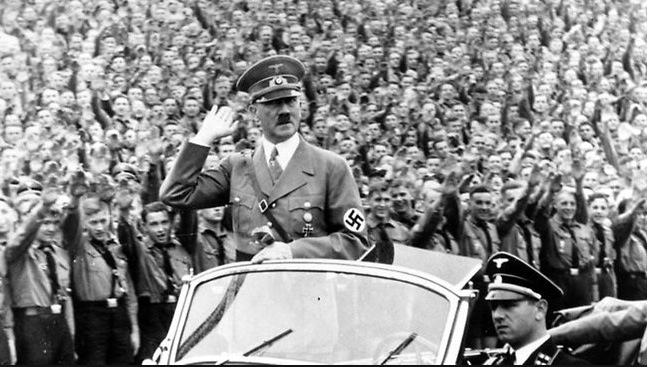
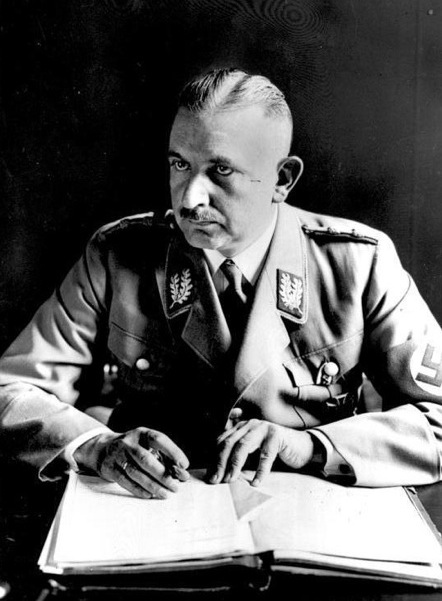
Pingback: Into the Darkness : Chapter 3 – Getting on with the Job | katana17
Pingback: Into the Darkness : Chapter 1: The Shadow | katana17
Pingback: Into the Darkness : Chapter 8: A Berlin Lady Goes to Market | katana17
Pingback: Into the Darkness : Chapter 13: Women of the Third Reich | katana17
Pingback: Into the Darkness : Chapter 14: Behind the Winter-Help | katana17